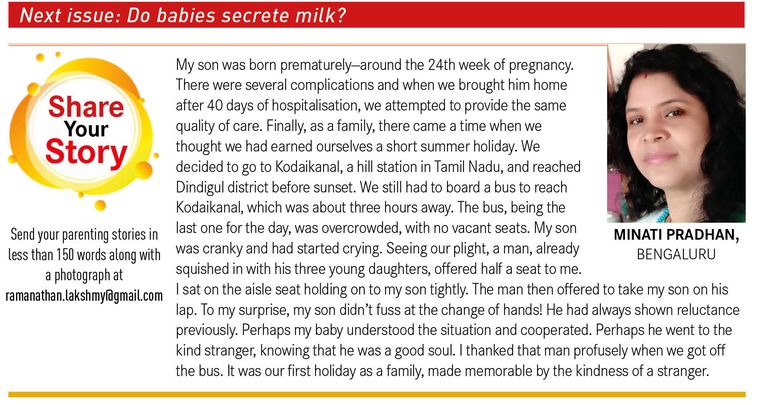AT BIRTH, my nose didn’t look anything like the sharp, aquiline ones in the family. In the months that followed, my mother took to pressing and pulling my stubby nose but to no avail.
At birth, baby noses rarely look their best. Reddened and swollen noses are a result of the delivery process and intrauterine fluid accumulation. While redness reduces with time, draining of excess fluid accumulation reduces the puffiness of the nose. Sometimes a baby's nose gets squashed while making its way through the birth canal. The effects are, however, temporary and the nose will regain its original shape within days. There is no need to press or pinch your baby’s little nose. The continual action will surely cause discomfort for the baby.
In our society, baby massages often include vigorous, repeated strokes applied to the nose or head in an attempt to contour their shape. But again, the shape of both the head and nose is pre-determined.
Some babies can develop an asymmetric head shape due to:
1. Adoption of a complicated presentation in utero: if a baby adopts a breech/oblique/transverse presentation or is cramped with a twin, its head can suffer from a degree of asymmetry. This is something that will be evaluated at birth by a doctor and treated if required.
2. Use of forceps or vacuum apparatus (ventouse) for birthing: Some babies acquire a conical head shape or an elongated crown when they are pulled out with the help of forceps or a ventouse. This elongation corrects on its own with time.
3. Overriding of sutures: Openings in a baby’s skull allow the baby to make its way through the birth canal without suffering any injury. These openings are held together by fibres called sutures. When the baby’s head is compressed and squeezed through the birth canal, these sutures overlap, causing the skull to ‘go in’ at a particular spot, rendering an asymmetric shape to the baby’s head at birth.
Relax though. In most cases, the head usually assumes a normal shape within days.


